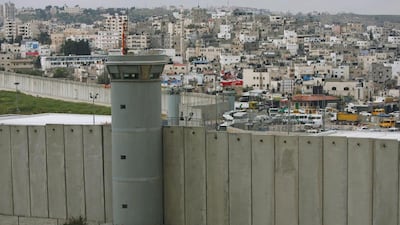Israeli Apartheid Week is under way in the Arab world. What began as a marginal gathering of activists now commands the attention of the highest levels of Israel’s leadership. As such, the response from Israel’s supporters has been predictably hysterical, and a recent article by the United Kingdom’s chief rabbi in the New Statesman is a case in point.
Ephraim Mirvis, the South African-born chief rabbi of Britain, claims to know what apartheid looks like, because he grew up in apartheid South Africa. In his attack on Israeli Apartheid Week, he details how familiar he was with the different status placed upon black South Africans under apartheid. Mr Mirvis’s argument is not a new one.
He argues that Israel is not an apartheid state and says he would know because he lived under apartheid. The basis for this argument would be compelling if it weren’t for the simple fact that Mr Mirvis is white and had full civil rights under the apartheid regime. But it is striking that Mr Mirvis can look back at his upbringing in South Africa and fail to see that he did, in fact, play a part in the apartheid system by not actively attempting to end it. It is this cognitive dissonance that informs Mr Mirvis’s remarks on the Israel apartheid analogy.
He writes that under apartheid, “a legal structure of racial hierarchy governed all aspects of life. Black South Africans were denied the vote. They were required by law to live, work, study, travel, enjoy leisure activities, receive medical treatment and even go to the lavatory separately from those with a different colour of skin. Interracial relationships and marriages were illegal. It was subjection in its rawest form. Contrast that with Israel, a country where Arab, Druze, Bedouin, Ethiopian, Russian, Baha’i, Armenian and other citizens have equal status under the law”.
Mr Mirvis goes on to cite the appointment of a Palestinian citizen of Israel as a judge on the Israeli Supreme Court and the appointment of a Muslim to the post of deputy commissioner of the Israel Police. All of this diversion is articulated in a vain attempt to say that “the apartheid slur provides fuel for those who seek to polarise and it obstructs those who seek peace”.
Implicit in this argument is a rejection of the rights-based discourse that the apartheid analogy and the BDS movement highlight. Mr Mirvis and Israel supporters like him need the conflict to be understood on security terms, whereby both sides are relative equals striving for peace. But that is not the reality, because one side is actively depriving the other of human rights and dominating it with a colonial apparatus.
That is why the writer fails to mention the sustained attacks on Palestinian parties in the Israeli parliament; the institutional racism and second-class citizenship that Palestinians in Israel have when it comes to land purchase and access to state services; and, of course, the millions of Palestinians that Israel controls through a military government in the West Bank.
In recent years, senior politicians including Israel’s justice minister have stated that the two-state solution that would end Israel’s occupation of the West Bank is dead in the water.
With continued settlement construction on the West Bank, Israel is entrenching the status quo and ensuring that Tel Aviv controls all of the land between the Jordan River and the Mediterranean Sea.
In this present scenario, Israeli Jews have full civil rights (similar to those Mr Mirvis enjoyed in apartheid South Africa), Palestinian citizens of Israel have second-class rights with restrictions similar to those of African-Americans under Jim Crow, and Palestinians in the West Bank and Gaza have no rights and live under military occupation.
In the words of Tel Aviv’s mayor, Ron Huldai, who is attempting to take over the leadership of the Labour Party, as long as Israel is ruling over another people they will “not manage to be perceived in the world as a democracy”.
Israel’s closest allies see what the country has become and are increasingly talking about it in honest terms. The US ambassador to Israel Dan Shapiro told a security conference this year that Israel operates two separate and unequal systems of law in the West Bank: one for Israeli settlers and one for Palestinians.
The comments, which amounted to equating Israel to an apartheid state, were roundly condemned by Israeli officials, and the US embassy in Tel Aviv was forced to retract them but the facts on the ground are clear for all to see.
Slowly Israeli society is confronting the implications of its endless occupation and possible annexation of the West Bank, but its supporters are still divorced from this colonial reality. The genius of Israeli Apartheid Week, and by extension the BDS movement, is that these types of issues are debated in the mainstream.
It is critical to discuss where comparisons of Israel and apartheid South Africa are strong and where they fall apart. No two colonial experiments are the same but there are definite similarities that extend among all of them. But such discussion has been suppressed for decades when it comes to our understanding of the Israeli-Palestinian conflict. Honest discussion and debate is the only thing that can break down cognitive dissonance.
jdana@thenational.ae
On Twitter: @ibnezra

